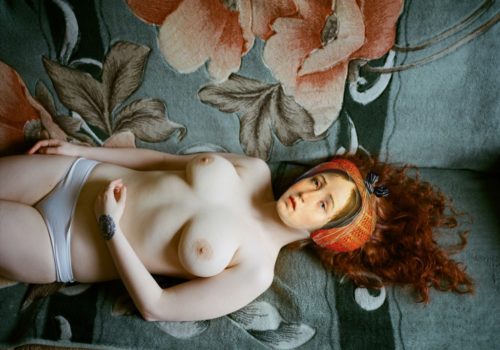The project “Masks-show” explores the continuity and succession in the history of arts. Traditions and modern trends constantly endorse and reject each other. Such a strained relationship is provoked mostly by attempts to comprehend today’s customs and mores.
A series of collages depicts naked bodies of modern girls, with their faces covered by ”masks”. These ”masks” are pieces of reproductions of works by famous artists, like Sandro Botticelli, Rogier van der Weyden, Hans Holbein the Younger and other painters, the majority of whom lived in the 15th -17thcenturies. In classical art, a female figure usually embodied sanctity or eroticism; sometimes these two notions were intricately intertwined in the images of Christian martyrs. Depicted women were denied the right to their corporeity – their image was in the hands of a male artist, and later, of a male viewer. Such paintings were subject to a number of visual conventions making female images as comfortable as possible for shameless contemplation (for example, a nude model could not meet the gaze of the viewer).
Young girls in the works of Masha Svyatogor seem to be in a totally different position: their bodies are free, poses are natural, and they own the decision to pose naked. Yet, the reason why this series of collages was created was the desire of some models to take back/usurp/destroy the original photos that were made long time ago. Probably, this desire can be explained by the changes in the worldview and perception of one’s own body and the social frameworks this body needs to fit in. In this situation, the victim is not a model but the author of the photos who is made to choose between ethics and copyright. The consent to give away the photos could be compared to a painful gesture of abandoning your work for the “good” of your neighbor.
Hence, using a mask seems to be the best option here. A woman tells a story about another woman by covering her face with a mask of a woman from the past epoch. Masking the face is like an attempt to protect the witness. It plays with the modern girls’ perception of their own physicality, which, in common sense, still has an ambivalent meaning of something being too forbidden on one side and something being used exclusively as an object of admiration and desire on the other. It may look paradoxical but refusing to identify themselves with the bodies in the photos, the models may also end up losing control over their representation, thereby joining the cohort of “inspirers” and “muses” of the past centuries.
Text by Vera Zalutskaya
















